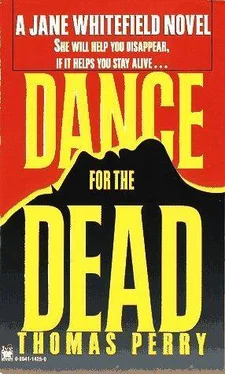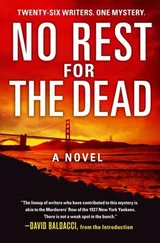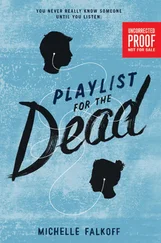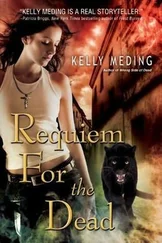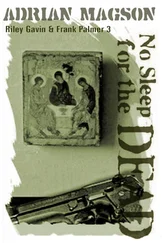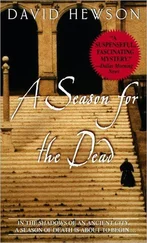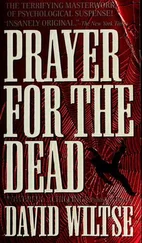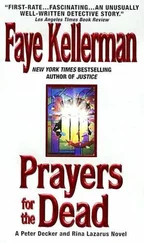Thomas Perry - Dance for the Dead
Здесь есть возможность читать онлайн «Thomas Perry - Dance for the Dead» весь текст электронной книги совершенно бесплатно (целиком полную версию без сокращений). В некоторых случаях можно слушать аудио, скачать через торрент в формате fb2 и присутствует краткое содержание. Жанр: Старинная литература, на английском языке. Описание произведения, (предисловие) а так же отзывы посетителей доступны на портале библиотеки ЛибКат.
- Название:Dance for the Dead
- Автор:
- Жанр:
- Год:неизвестен
- ISBN:нет данных
- Рейтинг книги:4 / 5. Голосов: 1
-
Избранное:Добавить в избранное
- Отзывы:
-
Ваша оценка:
- 80
- 1
- 2
- 3
- 4
- 5
Dance for the Dead: краткое содержание, описание и аннотация
Предлагаем к чтению аннотацию, описание, краткое содержание или предисловие (зависит от того, что написал сам автор книги «Dance for the Dead»). Если вы не нашли необходимую информацию о книге — напишите в комментариях, мы постараемся отыскать её.
Dance for the Dead — читать онлайн бесплатно полную книгу (весь текст) целиком
Ниже представлен текст книги, разбитый по страницам. Система сохранения места последней прочитанной страницы, позволяет с удобством читать онлайн бесплатно книгу «Dance for the Dead», без необходимости каждый раз заново искать на чём Вы остановились. Поставьте закладку, и сможете в любой момент перейти на страницу, на которой закончили чтение.
Интервал:
Закладка:


DANCE FOR THE DEAD
Thomas Perry
Copyright (c) 1996 by Thomas Perry
For Jo
with love to Alix and Isabel
The common aim of all war parties was to bring back persons to replace the mourned-for dead. This could be done in three ways: by bringing back the scalp of a dead enemy (this scalp might even be put through an adoption ceremony); by bringing back a live prisoner (to be adopted, tortured, and killed); or by bringing back a live prisoner to be allowed to live and even to replace in a social role the one whose death had called for this "revenge."
Anthony F. C. Wallace, The Death and Rebirth of the Seneca, 1969
1
The tall, slim woman hastily tied her long, dark hair into a knot behind her head, planted her feet in the center of the long courthouse corridor, and waited. A few litigants and their attorneys passed her, some of them secretly studying her, more because she was attractive than because she was standing motionless, forcing them to step around her on their way to the courtrooms. Her chest rose and fell in deep breaths as though she had been running, and her eyes looked past them, having already dismissed them before they approached as she stared into the middle distance.
She heard the chime sound above the elevator thirty feet away. Before the doors had fully parted, three large men in sportcoats slipped out between them and spun their heads to stare up the hallway. All three seemed to see her within an instant, their eyes widening, then narrowing to focus, and then becoming watchful and predatory, losing any hint of introspection as they began to move toward her, one beside each wall and one in the middle, increasing their pace with each step.
Several bystanders averted their eyes and sidestepped to avoid them, but the woman never moved. She hiked up the skirt of her navy blue business suit so it was out of her way, took two more deep breaths, then swung her shoulder bag hard at the first man's face.
The man's eyes shone with triumph and eagerness as he snatched the purse out of the air. The triumph turned to shock as the woman slipped the strap around his forearm and used the momentum of his charge to haul him into the second man, sending them both against the wall to her right. As they caromed off it, she delivered a kick to one and a chop to the other to put them on the floor. This bought her a few heartbeats to devote to the third man, who was moving along the left wall to get behind her.
She leaned back and swung one leg high. The man read her intention, stopped, and held up his hands to clutch her ankle, but her back foot left the ground and she hurled her weight into him. As her foot caught him at thigh level and propelled him into the wall, there was the sickening crack of his knee popping. He crumpled to the floor and began to gasp and clutch at his crippled leg as the woman rolled to the side and sprang up.
The first two men were rising to their feet. Her fist jabbed out at the nearest one and she rocked him back, pivoted to throw an elbow into the bridge of his nose, and brought a knee into the second man's face.
There was a loud slapping sound and the woman's head jerked nearly to her left shoulder as a big fist swung into her cheekbone. Strong arms snaked around her from behind, lifted her off her feet to stretch her erect, and she saw the rest as motion and flashes. The first two men rushed at her in rage, aiming hard roundhouse punches at her head and face, gleeful in the certainty that she saw the blows coming but could do nothing to block them or even turn to divert their force.
Two loud, deep voices overlapped, barking for dominance. "Police officers! Freeze!"
"Step away from her!" When her opponents released her and stepped away, she dropped to her knees and covered her face with her hands. In a moment, several bystanders who had stood paralyzed with alarm seemed to awaken. They were drawn closer by some impulse to be of use, but they only hovered helplessly nearby without touching her or speaking.
The judge's chambers were in shadow except for a few horizontal slices of late-afternoon sunlight that shone through the blinds on the wood-paneled wall. Judge Kramer sat in his old oak swivel chair with his robe unzipped but with the yoke still resting on his shoulders. He loosened his tie and leaned back, making the chair's springs creak, then pressed the play button on the tape recorder.
There were sounds of chairs scraping, papers shuffling, and a garble of murmured conversation, so that the judge's empty chamber seemed to be crowded with invisible people. A female voice came from somewhere too close to the microphone. "This deposition is to be taken before Julia R. Kinnock, court stenographer at 501 North Spring Street, Los Angeles, California, at ten... seventeen a.m. on November third. The court's instructions were that if there is an objection to the use of a tape recorder, it will be turned off." There was silence. "Will the others in the room please identify themselves."
"David M. Schoenfeld, court-appointed counsel to Timothy Phillips." Schoenfeld's voice was smooth, and each syllable took too long to come out. Judge Kramer could almost see him leaning into the microphone to croon.
"Nina Coffey, Department of Children's Services, Los Angeles County, in the capacity of guardian for a minor person." Kramer had read her name on a number of official papers, but he had never heard her voice before. It was clear and unapologetic, the words quick and clipped, as though she were trying to guard against some kind of vulnerability.
"Kyle Ambrose, Assistant District Attorney, Los Angeles." As usual, the prosecutor sounded vaguely confused, a pose that had irritated Kramer through six or seven long trials.
Then came the low, monotone voices that were at once self-effacing and weighty, voices of men who had spent a lot of time talking over radios. They started quietly and grew louder, because the last part of each name was the important part.
"Lieutenant James E. Bates, Los Angeles Police Department."
"Agent Joseph Gould, Federal Bureau of Investigation."
There was some more shuffling of papers and then Julia Kinnock said, "Mr. Ambrose, do you wish to begin?"
Ambrose's parched, uncertain voice came in a beat late. "Will you state your name for the record, please?"
There was some throat clearing, and then the high, reedy voice of a young boy. "Tim... Timothy John Phillips."
Schoenfeld's courtroom voice intoned, "Perhaps it would be a good idea to ask that the record show that Lieutenant Bates and Agent Gould here present have verified that the deponent's fingerprints match those of Timothy John Phillips, taken prior to his disappearance."
The two voices muttered, "So verified," in the tone of a response in a church. Amen, thought Kramer. Schoenfeld had managed to sidestep onto the record with the one essential fact to be established in the case from Schoenfeld's point of view.
Ambrose's voice became slow and clear as he spoke to the boy. "You are to answer of your own accord. You are not to feel that you are in any way obligated to tell us things you don't want to." Judge Kramer could imagine Ambrose's dark eyes flicking to the faces of Schoenfeld, the lawyer, and Nina Coffey, the social worker. It was a confidence game, as Ambrose's legal work always was. The kid would have to answer all of the questions at some point, but Ambrose was trying to put the watchdogs to sleep. "Mr. Schoenfeld is here as your lawyer, so if you have any doubts, just ask him. And Mrs. Coffey will take you home if you're too tired. Do you understand?"
Читать дальшеИнтервал:
Закладка:
Похожие книги на «Dance for the Dead»
Представляем Вашему вниманию похожие книги на «Dance for the Dead» списком для выбора. Мы отобрали схожую по названию и смыслу литературу в надежде предоставить читателям больше вариантов отыскать новые, интересные, ещё непрочитанные произведения.
Обсуждение, отзывы о книге «Dance for the Dead» и просто собственные мнения читателей. Оставьте ваши комментарии, напишите, что Вы думаете о произведении, его смысле или главных героях. Укажите что конкретно понравилось, а что нет, и почему Вы так считаете.
